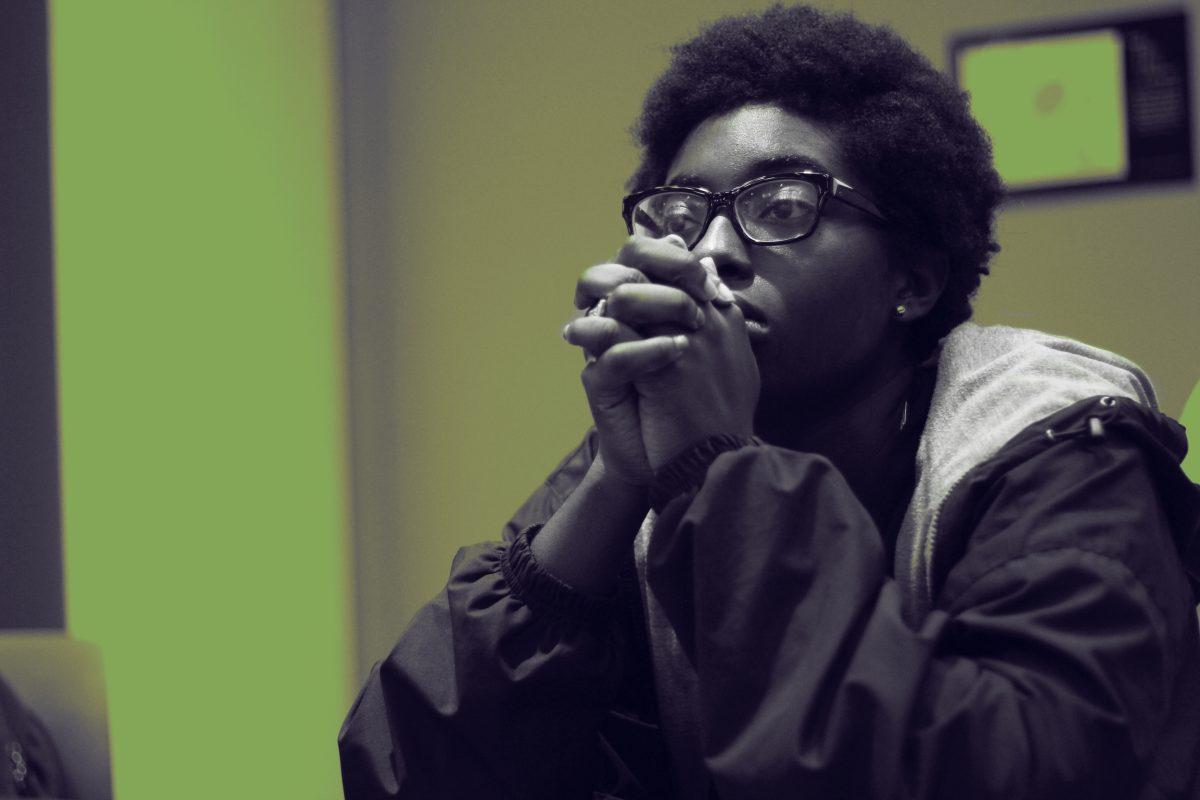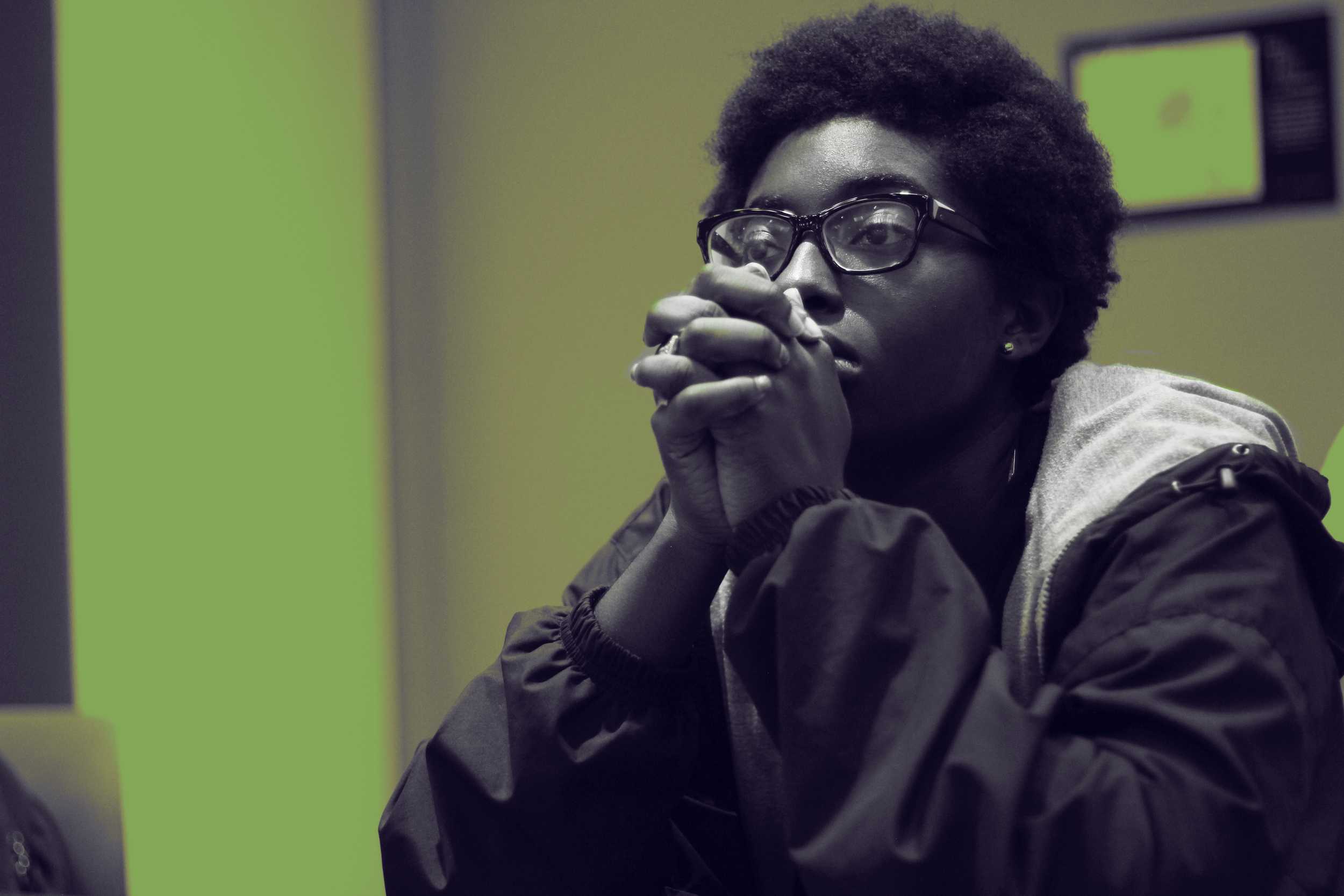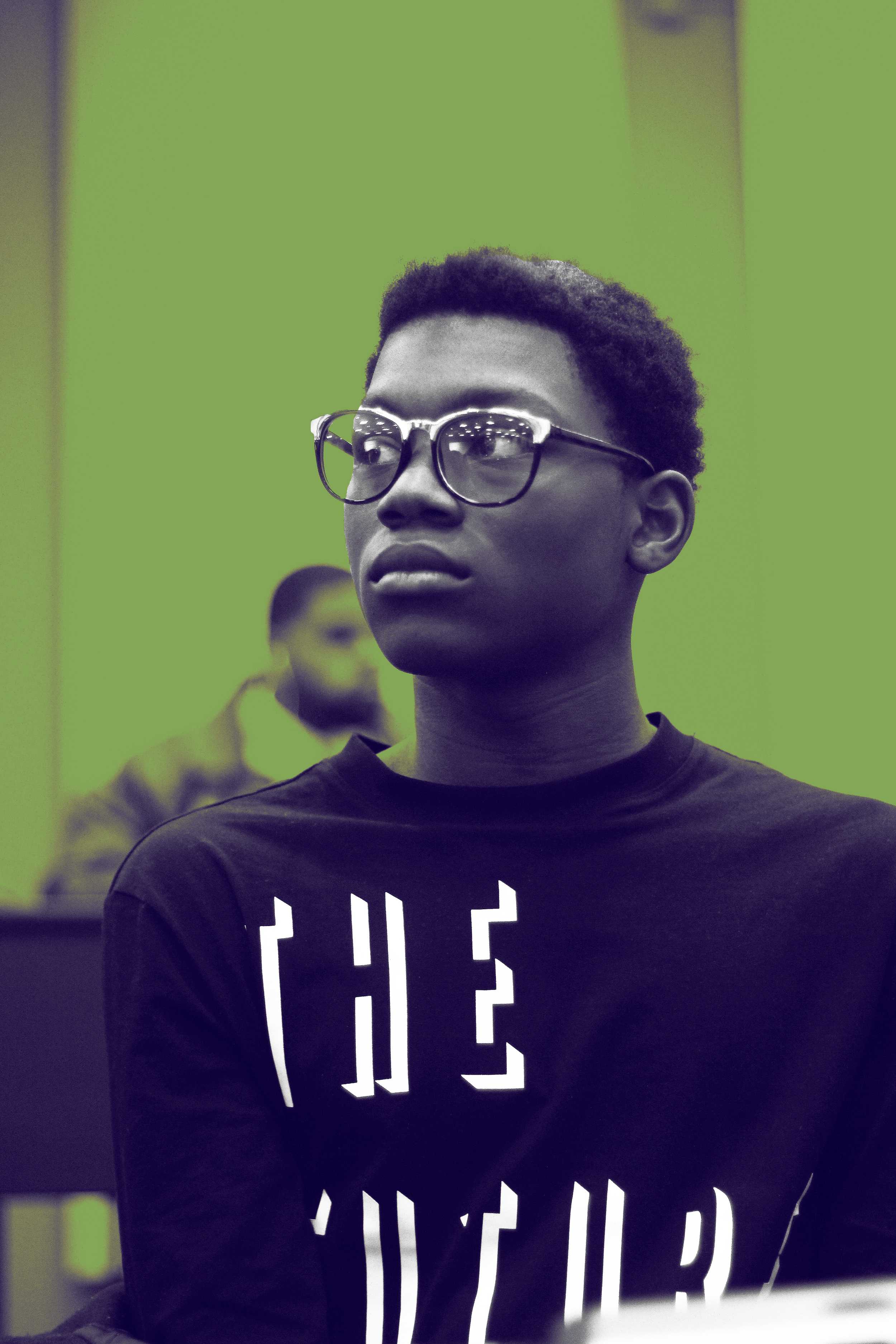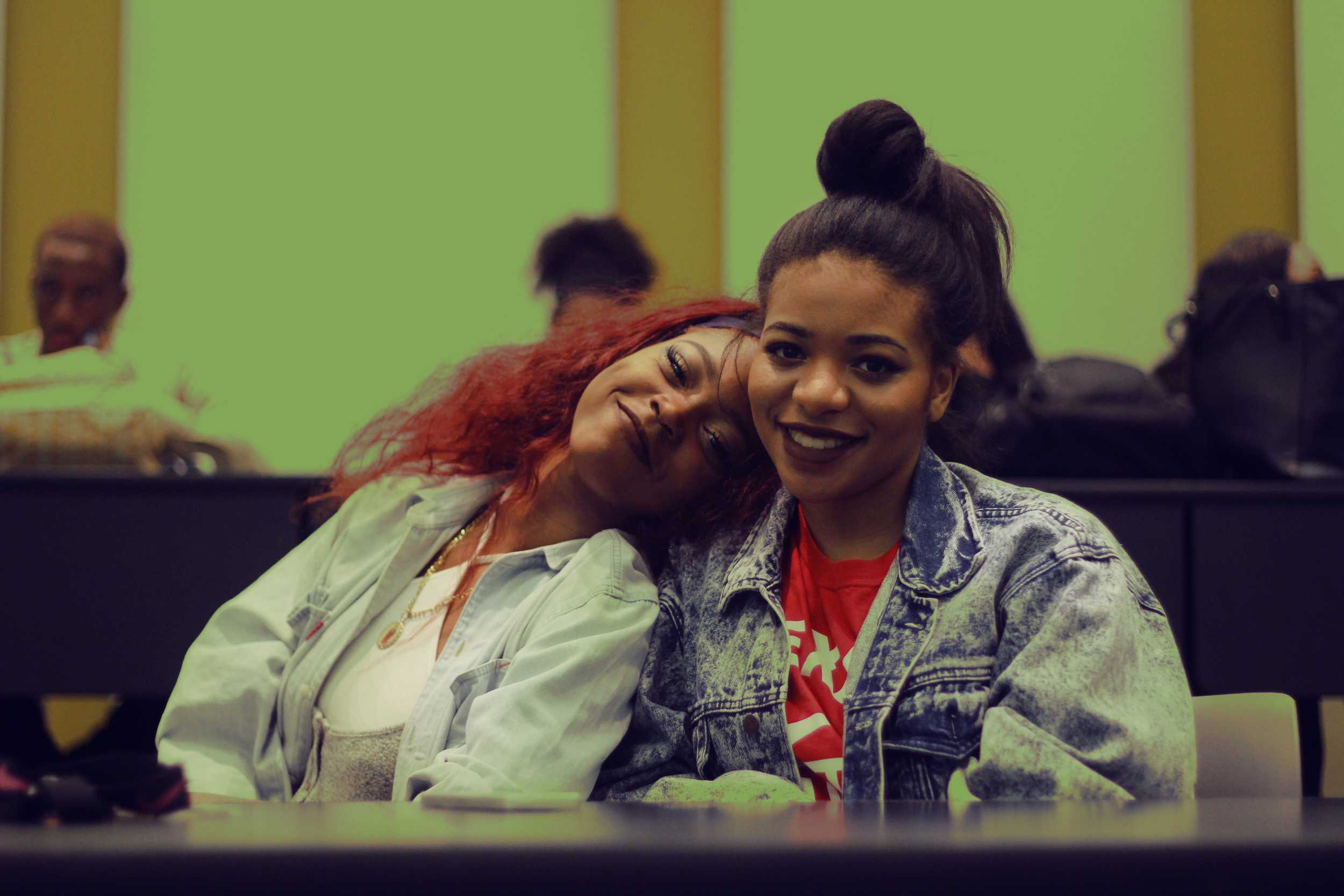Editor’s Note: This story appeared in the December 2015 ORANGE Issue IV.
From Yale to Kean to Howard University, college campuses are fraught with both tense and strained racial relations. Students have been anything but shy as they have begun trailblazing discussions concerning how effectively their universities address racial issues.
Story By Hannah McMorris
Photos By Emily Nash
“This is a predominantly white campus, but we are here, and we’re going to be a major focus. We’re going to make this a place for us and for our children to come to,” Brenda Burt says. Burt, a lecturer and director of marketing and public relations in the African and African Diaspora Studies department, summarizes the thoughts of countless black students on the University of Texas at Austin campus. Starting in late 2015, UT became one of the many college campuses referenced in news media regarding racially-charged issues. From Yale to Kean to Howard University, college campuses are fraught with both tense and strained racial relations. Students have been anything but shy as they have begun trailblazing discussions concerning how effectively their universities address racial issues.
Students at the University of Missouri made headlines when years of student dissatisfaction with university administration came to a head in November. Racial tensions at the university go back decades, but more recent con ict began in 2010 when cotton balls, as a nod to American slave days, were scattered across the lawn of the Black Culture Center. Beginning in September of this year, there were increasingly more notable cases of racism across the campus. After a groupof white students screamed racial slurs at black and openly gay Student Government President Payton Head, he expressed that incidents such as these make him feel excluded from his own campus. About a month later, a white student jumped on stage and interrupted a homecoming rehearsal put on by the Legion of Black Collegians. When asked to leave, he retorted by calling the members present the N-word. It wasn’t long after that a student used feces to draw a Nazi swastika on the walls of a dorm. Months of hate crimes like these culminated in increased tension, rallies and protests.
Concerned Students 1950, an organization named after the date on which black students were first enrolled at the University of Missouri, outlined a list of eight demands. The demands included the removal of the school’s president, Tim Wolfe; an increased amount of black faculty and staff; and that the demands presented in 1969 by the Mizzou Legion of Black Collegians be met. In response, Wolfe held a private meeting with the Legion but was unresponsive when asked if he would meet their demands. Ultimately, no resolutions were made, and no action was taken. The apathy of Mizzou administration led Concerned Students 1950 member Jonathan Butler to go on a hunger strike for four days. His strike garnered attention from athletes, who promised not to practice or play until their demands were addressed. Three days after Butler ended his hunger strike on Nov. 6, Wolfe resigned, causing even more racial tension. For now, people nationwide await the change black students are demanding.
Racism across college campuses is nothing new. UT in particular is no stranger to discrimination, as it has a deep-seated history of undeniable racism. At UT, most students have little to no knowledge of the school’s racial issues, perhaps suggesting that the school’s history is a taboo topic among students, faculty and administration. Arguably, lack of discussion is to blame for the way the university handles controversial issues today. In the words of Sandra Mere, textiles and apparels senior and Black Student Alliance member, “It’s not that [the administration] doesn’t respond, but they do just enough so that they’re not ignoring people.” It is this minimalistic attitude that has plagued the university when it comes to controversial issues such as racial discrimination.
To date, the university has been a part of three landmark Supreme Court cases concerning campus diversity. The first of these is Sweatt v. Painter, which allowed black students to be admitted to the UT Law School under the Equal Protection Clause in the 14th Amendment. With
this decision in 1950, UT became the first southern university to be required by law to admit black students to its graduate programs. Six years later, the campus allowed for full integration. The 1950s were not long ago, and the transition from being an exclusively white university to a university thataccepted all races was long and treacherous for black students, as history suggests. According to the UT Austin Accountability Report, the black population at UT made up 4.4 percent of the student body in the fall 2014 semester, which is disproportionate to the 13.2 percent black population in the U.S. The lack of representation of the black community within the UT Austin campus has long been a point of contention among students and faculty.
According to official university documents, in 1969, the Afro-Americans for Black Liberation presented a list of demands to former UT president Norman Hackerman. The list was very similar to demands made by Mizzou students. In UT’s list, students outlined their principal dissatisfactions in which they said the university “exposed them to racist attitudes and situations, and has completely ignored their essential needs.” Their comprehensive list called for a “Black Studies Department with 50 professors and instructors; immediate dismissal of Board of Regents member Frank Irwin; removal of racist faculty and staff; recognition of holidays in honor of Malcolm X and Dr. Martin Luther King Jr.,” among other demands.
When reviewing the blatant similarities between the two universities, students wonder why there is still so much ground needed to be covered 50 years after the crux of the civil-rights movement. What is holding the university back from increasing the presence of an on-campus black community? Why do students still carry some of the same burdens of black students in the 1960s?
Students and faculty alike have suggestions for how UT can become more inclusive to the black community. Leonard Moore, Academic Diversity Initiatives associate vice president and history professor applauds the university on its addition of an African and African Diaspora studies department, acknowledging that it “is unheard of in 2015,” and hiring more minority faculty was a step in the right direction. Burt says though this surge of minority hires is needed, it is now time for “the rest of [the colleges] to fall in line with doing that, so our students who are in the other colleges also have the opportunity to learn from professors who are of different races.”
This lack of adequate minority representation has plagued UT for decades. Mere is bewildered as to why, “in a class of 300, you can be the only black person.” Burt says the consistently low percentage of incoming black students is the fault of the university, because “it is impossible to remain the same percentage for 20 years, unless there is something in place to mandate that that happens. It’s just impossible, so the university needs to do a better job of recruiting students of color.”
Students like Mere and Taylor Walker, who is a sports management senior and former president of UT’s Black Student Alliance, agree with this sentiment. Both feel they have no choice but to exercise their responsibility to educate students at their alma mater high schools about universities like UT. Both Walker and Mere talk of Alief, a low socioeconomic suburb of Houston, whose schools are easily overlooked when it comes to outreach and admission. UT representatives are quick to visit large, predominantly white schools in the Houston area. “What about the not-as-big schools that still have black students that are smart?” Walker asks. Mere cannot remember one university representative reaching out to her or visiting her high school. “Why does it have to be the students that went [to those high schools] that have to say, ‘Hey, can y’all come to our school?’” Walker says. “Why isn’t the university reaching out to those schools that are 80 percent black? If you want more black students, you have to go get the black students.”
The incidents at Mizzou raise questions about how well students can truly impact their campus. When it comes to the black state at UT, Walker believes every predominantly white university has common issues, including opinions of black students not being heard and their needs not being met. Walker says the difference between Mizzou and UT is the way students have responded to the apathy of their administration. “The difference is, when we ask for something, they’re like, ‘Oh, we’ll get on it.’ But we fend for ourselves, so we have to make it happen in some other way,” Walker says.
Walker believes students at Mizzou “grew tired of doing it themselves, and they wanted the university to do it.” This, Walker says, differs from the UT community because students can hold rallies, fight for change and be complacent with not receiving that change. “We’re like, ‘OK, nothing happened as a result of us making this statement, but at least our statement was seen,’” Walker says. “At Mizzou, they were like, ‘OK, we want this statement seen, but we’re going to try and do something, too. We’re tired of waiting for [the administration] to do something, so either you’re going to do it, or we’re going to rebel.’”
If what Walker says is true, does this mean students are not radical enough to fight for racial change on campus? Or should UT, which is responsible for creating a harmonious campus climate, take more initiative when it comes to caring for its minority students?
Burt cites dialogue, or the lack of, as one of the most significant setbacks to the UT student community. “The university should be a place where there can be dialogue, so that we can talk about issues we care about,” she says. But for that to happen, “Conversations about race have to occur, because if we don’t talk about it… there will be all of these issues, like blackface [theatrical makeup historically worn by minstrel performers but is today considered by many to be a racist practice], that will continue because people will not have sat down and had dialogue about what it is that makes me who I am, what makes you who you are, and what are those differences and how conflict can arise when we aren’t communicating.”
Students at Mizzou have changed how college campuses approach racial discussion. Even at universities like UT, where the racial tension may not be as extreme, Mere expects administration is “trying to stop a problem before it starts” by sending out campus climate surveys and holding public forums. Mere also says she feels that the uni cation at Mizzou’s campus empowered students here. But UT has a very long way to go, and though the university is taking some necessary steps toward becoming racially inclusive, one thing is for certain: if UT doesn’t step up to the plate, then eventually its students will.














































